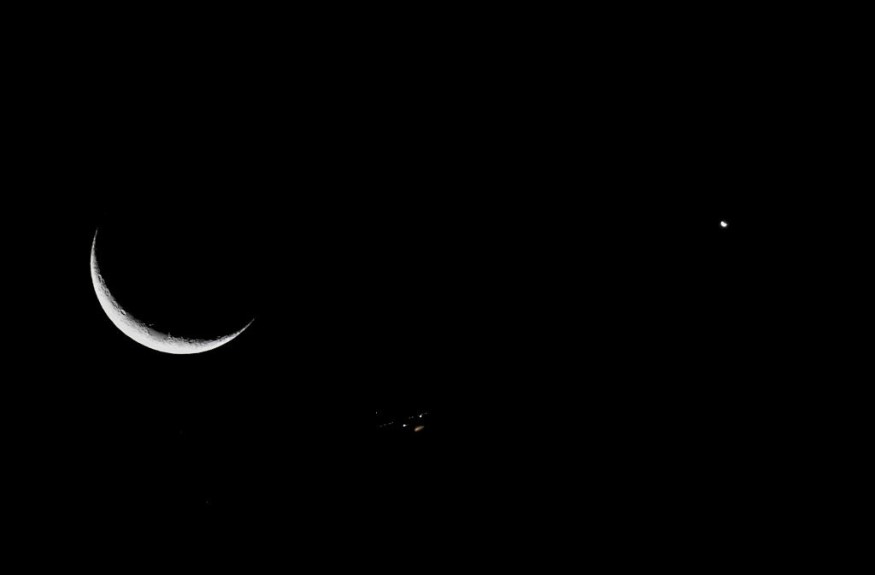In the early morning of Friday, June 16, the Moon and the elusive planet Mercury will be in close proximity to the bright red star, Aldebaran, famously referred to as the "eye" of the Taurus constellation. This celestial arrangement, known as a conjunction, indicates that the moon and Mercury will share the same right ascension, akin to celestial longitude.
According to the astronomical source, In the Sky, observers in New York City will witness the moon passing to the right side of Mercury, with a separation of merely 4 degrees in the sky during the conjunction, which is less than half the width of a hand at arm's length. Both celestial bodies will be positioned to the right of Aldebaran, providing a captivating sight for skywatchers.

What Time Will the Conjunction Become Visible
In the early hours of the morning, around 4:28 a.m. EDT (0828 GMT), the 28-day-old Moon and the small planet Mercury will emerge in the eastern sky from New York City. This celestial display will remain visible until their descent at approximately 7:06 p.m. EDT (2306 GMT). Those who plan to witness this event, exercise caution and avoid pointing any optical devices towards the rising sun.
During the conjunction, both the moon and Mercury will share a right ascension of 04h30m00s. As per Yahoo! News, the Moon will be positioned at a declination of +24°56', while the smallest planet in our solar system will have a declination of +20°38'.
Mercury, known as the closest planet to the Sun, will have a magnitude of -0.8 during the conjunction, while the moon will possess a magnitude of -8.3. The negative sign before these values indicates their significant brightness when observed from Earth.
Although the Moon and Mercury will not be close enough to observe together through a telescope during the conjunction, they can still be viewed using binoculars or even with the naked eye.
Despite the Moon's apparent dominance in Earth's sky compared to Mercury, it is worth noting that the small planet is actually slightly larger than our planet's primary natural satellite. While the moon has a diameter of approximately 2,200 miles (3,500 kilometers), the small planet measures around 3,000 miles (4,900 kilometers) in width.
READ ALSO : Moon-Saturn Conjunction May 2022: What Are the Upcoming Celestial Sky Events? How and When to Watch Them
Bright Red Eye of the Bull
Aldebaran, classified as a supergiant star, surpasses both the Moon and Mercury in size by a significant margin, Space.com reported. With a diameter of approximately 38 million miles (61 million kilometers), this colossal star not only dwarfs the two celestial bodies but is also about 44 times larger than the sun.
When it comes to volume, Aldebaran's magnitude is truly astonishing, measuring 85 thousand times greater than that of the sun. To fill the volume of the sun, it would take roughly 63 million moons, but to fill the vast expanse of Aldebaran, an incredible 5.4 trillion moons would be required.
Despite its immense size, Aldebaran has a slightly cooler surface temperature compared to the sun. It is estimated to have a surface temperature of around 6,600 degrees Fahrenheit (3,600 degrees Celsius), whereas the sun's surface temperature is estimated to be 10,000 degrees Fahrenheit (5500 degrees Celsius).
Nevertheless, due to its remarkable surface area, Aldebaran shines much brighter than the Sun, boasting a luminosity 400 times greater than our own star. Even at a distance of approximately 65 light-years from Earth, this red supergiant remains one of the 15 brightest stars visible in our planet's sky.
RELATED ARTICLE: Venus and Jupiter Conjunction 2022: Here's How to See This Lovely Celestial Event This Year!
Check out more news and information on Space in Science Times.












